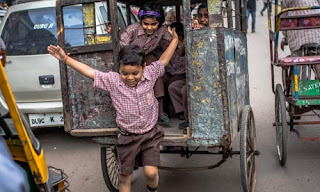[MLE] Article: Multilingual Education in India: Myth and Reality
Dear Multilingual Education friends, Samir Karmakar and Kinnari Pandya of the Azim Premji University, Bangalore published an article on Multilingual Education in India: Myth and Reality in which they plead to give more attention to the context: Any approach towards MLE is bound to fail if the stated form of the policy lacks an understanding of what is being aspired by the population with reference to the Indian languages which is often being decided by various economical and historical factors. Therefore, understanding the linguistic culture in India becomes a must. Very often the success and failure of a policy depends on the implicit, unofficial, unwritten, de facto aspect of what we call public opinion. Therefore, it becomes quintessential to understand the linguistic culture of the population to achieve the stated goals of the policy documents. This includes an in-depth invest...


